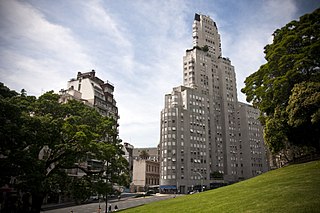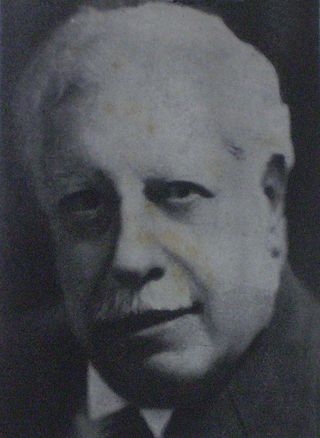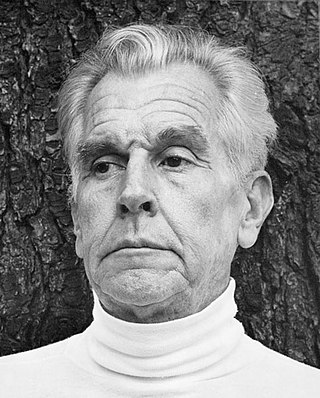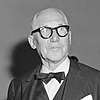
La Plata is the capital city of Buenos Aires Province, Argentina. According to the 2022 census, the Partido has a population of 772,618 and its metropolitan area, the Greater La Plata, has 938,287 inhabitants. It is located 9 kilometers inland from the southern shore of the Río de la Plata estuary.

The Estadio Tomás A. Ducó is a stadium in Argentina, located in the Parque Patricios neighborhood of Buenos Aires. The stadium is the home ground of Club Atlético Huracán and has a capacity of 48,314 spectators.

The Kavanagh Building is a residential skyscraper in Retiro, Buenos Aires, Argentina. Designed in 1934 by architects Gregorio Sánchez, Ernesto Lagos and Luis María de la Torre, it is considered a pinnacle of modernist architecture. At the time of its inauguration in 1936, the Kavanagh was the tallest building in Latin America surpassing the Palacio Salvo built in Montevideo, Uruguay in 1928, as well as the tallest building in the world with a reinforced concrete structure.

The architecture of Argentina can be said to start at the beginning of the Spanish colonisation, though it was in the 18th century that the cities of the country reached their splendour. Cities like Córdoba, Salta, Mendoza, and also Buenos Aires conserved most their historical Spanish colonial architecture in spite of their urban growth.

Alejandro Bustillo was an Argentine painter and architect who designed numerous buildings including iconic landmarks in Buenos Aires, Mar del Plata, and Bariloche.
There are many landmarks in Buenos Aires, Argentina some of which are of considerable historical or artistic interest.

Alberto Williams was an Argentine composer, pianist, pedagogue, and conductor.

Teodoro González de León was a Mexican architect.

Amancio Williams was an Argentine architect. He is among his country's leading exponents of modern architecture.

The Mar del Plata style is a vernacular architectural style very popular during the decades between 1935 and 1950 mainly in the Argentine resort city of Mar del Plata, but extended to nearby coastal towns like Miramar and Necochea.

Gastón Duprat and Mariano Cohn are TV and film directors and producers from Argentina. They began their career in TV in 1999, when they created and produced Televisión Abierta, an innovative and interactive TV show where the viewers created the content by requesting a cameraman to visit them to record a short clip. They both won the Konex Award Merit Diploma in 2002.

The Man Next Door is a 2010 Argentine film directed by Mariano Cohn and Gastón Duprat. It was nominated for the 2010 Goya Award for Best Spanish Language Foreign Film.

Juan Kurchan was an Argentine architect, designer, and mentor of the Modern Movement in Argentina. He designed a portable seat known as the BKF Chair or butterfly chair. He was part of a group working with Le Corbusier on a plan for redevelopment of the city of Buenos Aires, and later entered the city administration and designed many new buildings there. He later became a director of the National Endowment for the Arts.

Sonia Berjman is an urban and landscape historian, researcher on the history of Buenos Aires public space and protector of parks, squares, and public green spaces of that city, she is a acknowledged referent for these issues.

Sinceramente is the first book written by Cristina Fernández de Kirchner, former President of Argentina and former Vice President. She announced the publication of the book by surprise on April 23, 2019 on her Twitter account. Fernández de Kirchner stated that the book "is not autobiographical nor is it an enumeration of personal or political achievements, it is a look and a retrospective reflection to unravel some facts and chapters of recent history and how they have impacted the lives of Argentines and mine as well."

Fabiana Barreda is an Argentine photographer, performer, installationist and multimedia artist. Her work specializes in the body, desire and politics of gender. She has participated in national and international exhibitions, being the most important ones in places such as Museum of Modern Art, New York University (USA), International Architecture Biennale Rotterdam (Netherlands), Telefonica Foundation of Madrid (Spain) and Museum of Monterrey – MACO (Mexico).

The Ariston Club is a building in Mar del Plata, Argentina designed by Marcel Breuer. It is part of the Modern Movement, and complies with four of the five Le Corbusier's Points of Architecture: pilotis, free designing of the floor plan, free designing of the façade, horizontal windows.

Ciudad Universitaria is an urban campus of the University of Buenos Aires, the largest and most prestigious university in Argentina. Originally designed as a potential centralized campus for all of the university's facilities, nowadays it only houses two of its thirteen faculties: the Faculty of Architecture, Design and Urbanism and the Faculty of Exact and Natural Sciences, as well as a number of dependent institutes and a sports center.

The Casa del Puente is a house designed by the Argentine architect Amancio Williams in 1942 in the city of Mar del Plata, Argentina. The house is built over the course of a stream known as Las Chacras. It was intended to serve as the permanent residence of Williams father, Argentine musician and composer Alberto Williams. The project was originally known as Casa sobre el Arroyo. The house is listed among the most famous modernist buildings of the 20th century.




















